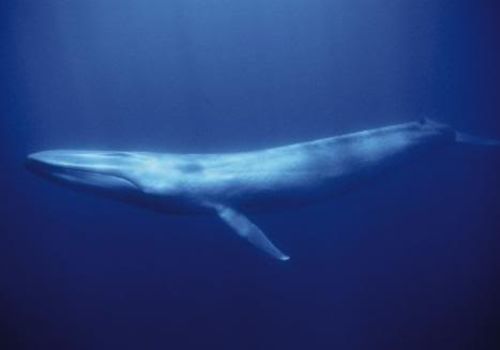
Blue whale
Balaenoptera musculusBlue whale
Introduction: The blue whale (Balaenoptera musculus) is the largest of all living mammals. To put its size into perspective, it is the length of five African elephants trunk to tail. It is not a deep diver and usually stays under water for only 10 min. They occur singly or in groups of 2 or 3, but pods of up to 12 have been observed.
Distribution: All oceans of the world and on the continental shelf. It can be seen off the coast of Namibia in the winter, although sightings are seldom.
Diet: It feeds exclusively in summer on krill (up to 8 tonnes a day).
Colouring: Dark bluish-grey body, mottled with light grey blotches. The belly and sides are paler than the back and the underside of the flipper is characteristically white.
Breeding: Mating and calving usually occur between May and July. A single calf is born after a gestation period of 11 months. It is suckled for 7 months.
Size: Length 26m although they can grow as large as 33m. Weight 110t. Calves are around 7.5m long and weigh around 2.5 tonnes
Klein Windhoek

